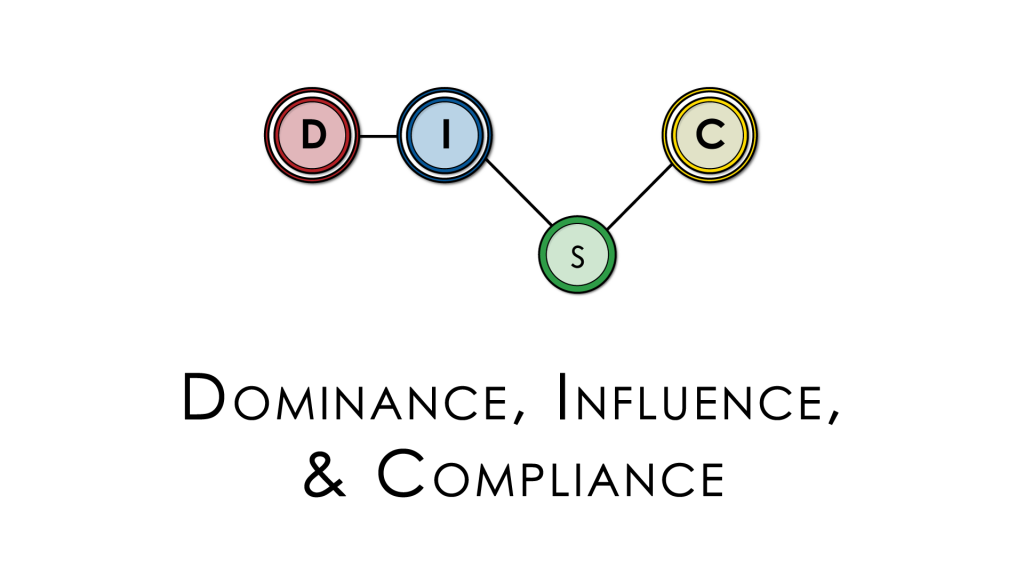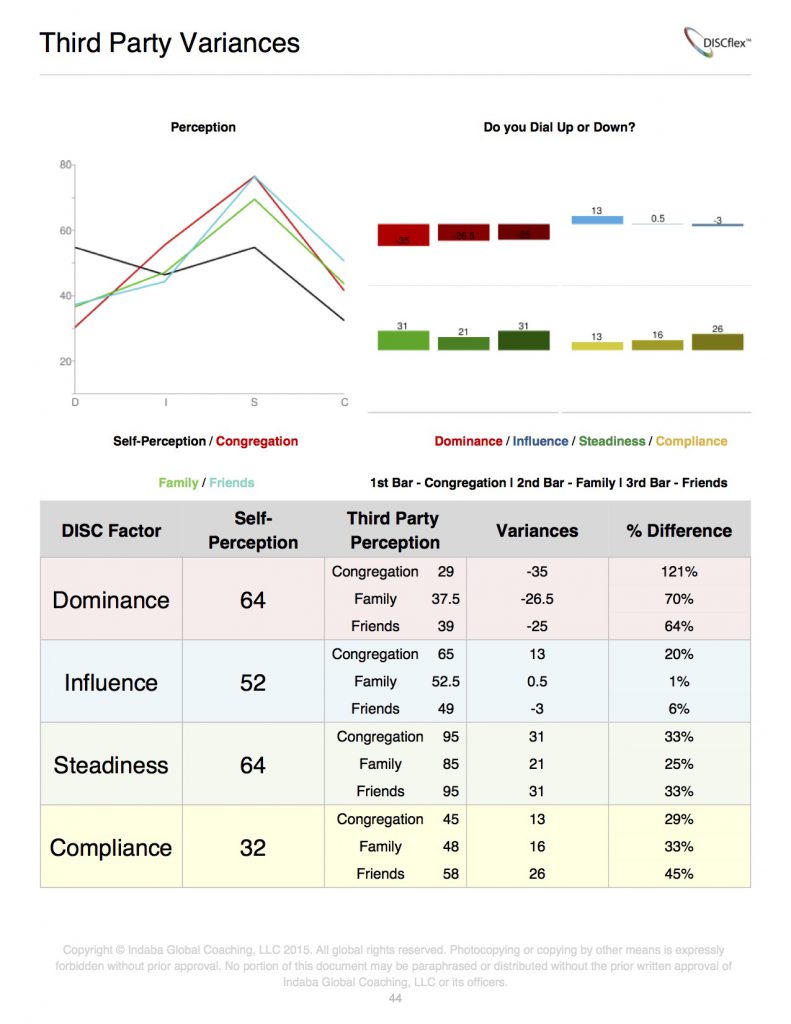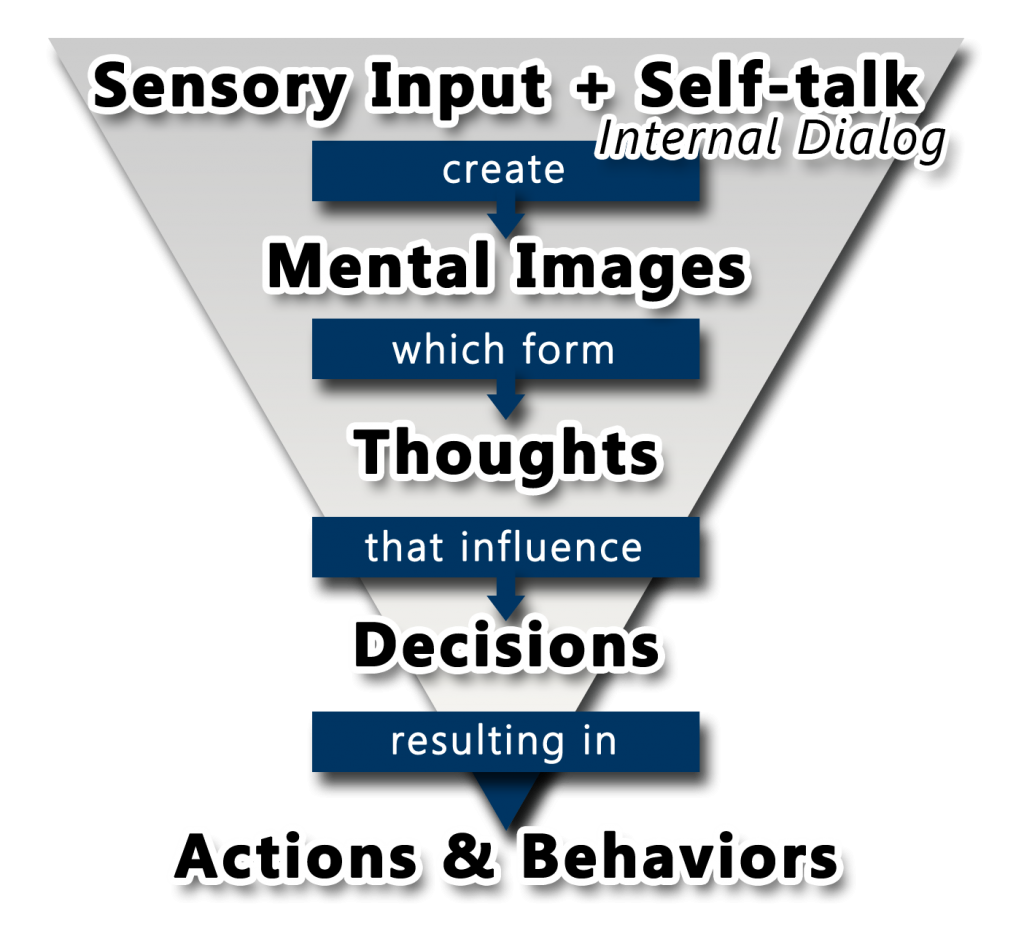Posts Tagged ‘DISC Assessment’
DISC Patterns Explained – Elevated DIS Pattern
Individuals whose assessment grading indicates an Elevated score in three of the factors – D, I & S (and comparatively lower Compliance) generally exhibit these tendencies: The prevailing factor in the Elevated Dominance, Influence, and Steadiness pattern is that the compliance ranking is low. People with this profile have specific ideas about their goals and…
Read MoreDISC Patterns Explained – Elevated DIC Pattern
Individuals whose assessment shows rankings of three factors: Elevated in D, I, & C (and comparatively lower S) generally exhibit these tendencies: People that have a high sense of urgency, understand time constraints and how to deal with them, are usually Elevated D, I, & C’s. Their speed of response and impatient style make them…
Read MoreDISC Patterns Explained – Elevated DSC Pattern
Individuals whose DISC assessment results point toward a ranking with three elevated factors — Elevated D, S, & C (and comparatively lower Influence) will generally exhibit these types of tendencies: The combination of three elevated factors — dominance, steadiness, and compliance — can be a fairly complex pattern. The three elevated factors overshadow influence, which…
Read MoreDISC Patterns Explained – Elevated ISC Pattern
Individuals whose assessment results depict an Elevated I, S & C factors (and comparatively lower d) generally exhibit these tendencies: Individuals with Elevated I, S & C factors exhibit a low dominance factor, which means that they are not very likely to be assertive or demanding. Rather, these individuals try to influence others through communication…
Read MoreDISC Patterns Explained – Compressed DISC Patten (DISC)
When a pattern is produced where all four DISC factors are very close to one another, it represents a special case and is labeled as a “Compressed DISC Pattern” or a “Flat Line” Pattern. When the scores are within a set range determined by our algorithm, it indicates that none of the DISC factors are…
Read MoreDISC assessments improve customer service
Did you know? DISC Assessments improve customer service! According to British anthropologist Robin Dunbar, the average human being can only maintain a stable relationship with approximately 150 people. This is referred to as Dunbar’s Number. In short, this is the number of people you know on an inter-personal level and can reasonably predict how they…
Read MoreUpdated DISC Reports!
Indaba Global is proud to present our newly updated DISC Reports! You gave us feedback, and we listened. Our new updated DISC reports include a “What is DISC” page at the beginning of our reports, an upgraded Sub-Factor section, and an improved 3rd Party Feedback section. These changes will answer common questions we have received…
Read MoreThe Trap of Staying in Your Behavioral Pattern
Using DISC to Master your Behavior Pattern Get it Done with a Simple 4 Step Process Sometimes what got you the success you enjoy today won’t always be what gets you to the next level. Whether this is in your career (or in life). That’s a universal truth. Your biggest strength is precisely what might…
Read MoreTeam Behavior Report
Team Behavior Report – Assess your team today! Indaba Global Coaching, LLC announced their newest and most comprehensive report yet. The DISCflex Team Report. Assessing individual’s behaviors has become common practice among Fortune 500 companies. Now mid to small-sized companies have begun to follow suit as prices have come down. However, assessing Team Behavior is…
Read MorePerformance and Behavior
Performance and Behavior As professionals advance, their performance and behavior will determine where they end up. Indaba Global has created a Performance and Behavior Model that measures where an employee is currently, and shows the progression needed to advance to the higher stages. Behavior modification skills (from the bottom to the top of the chart),…
Read More









